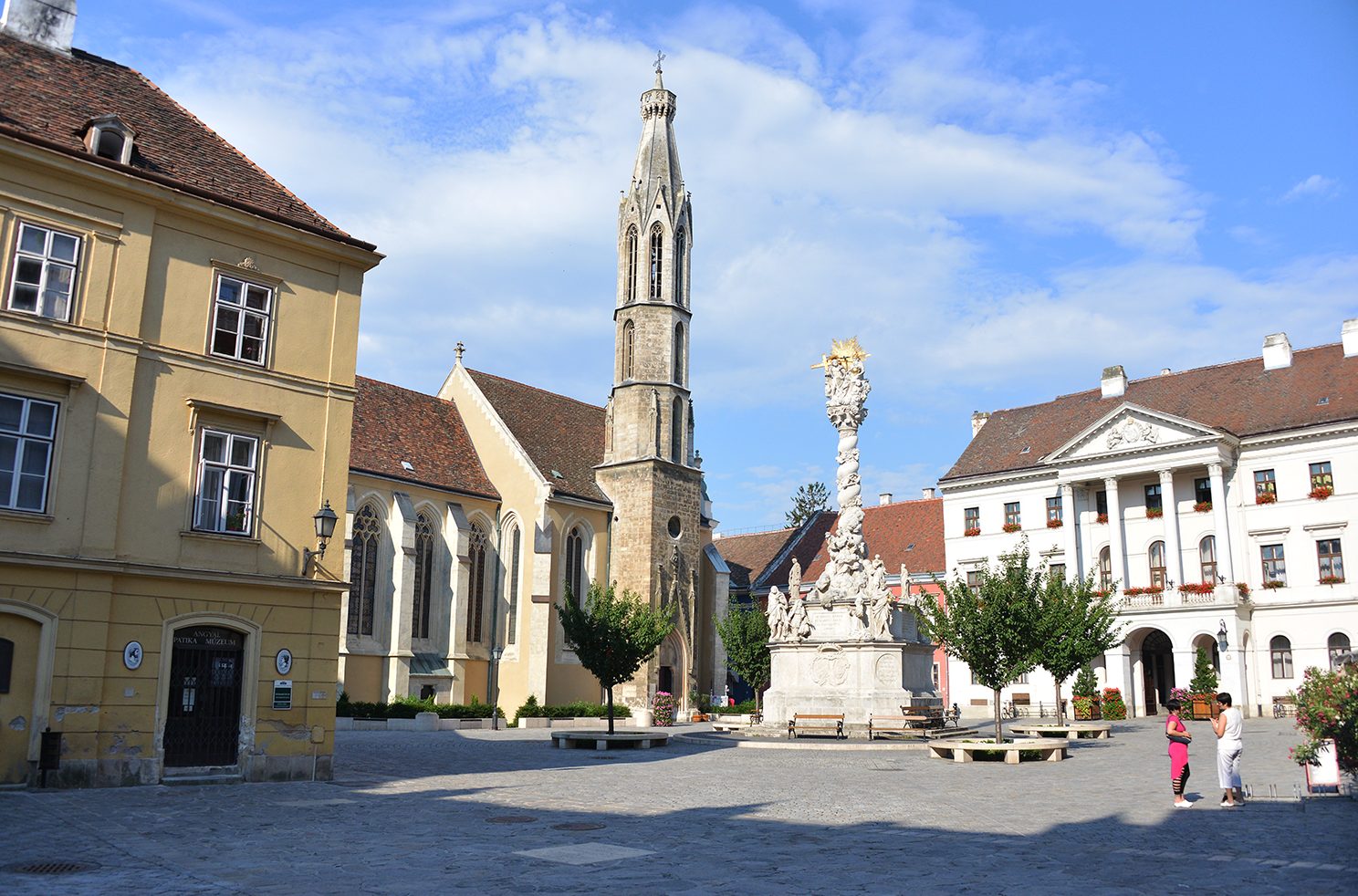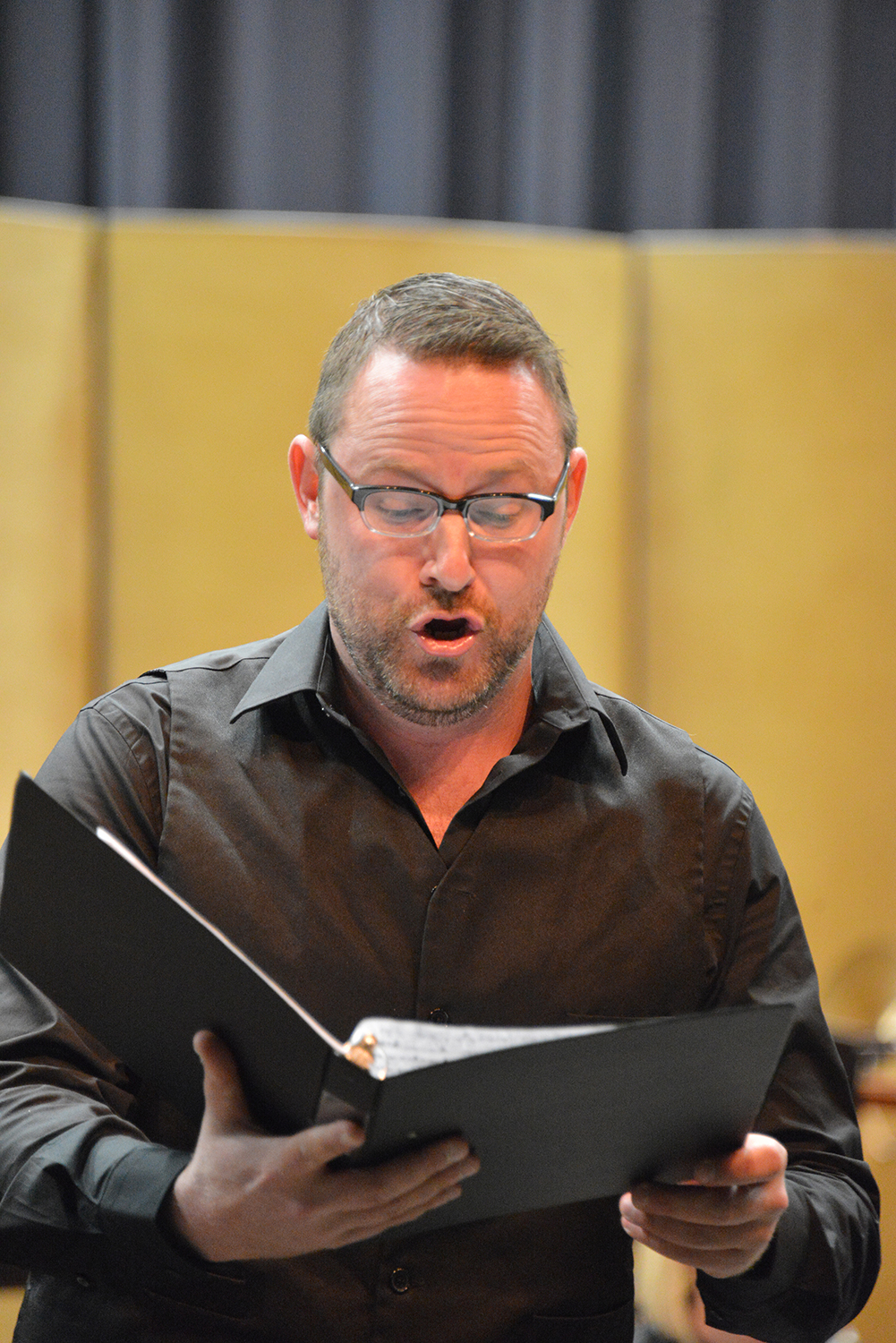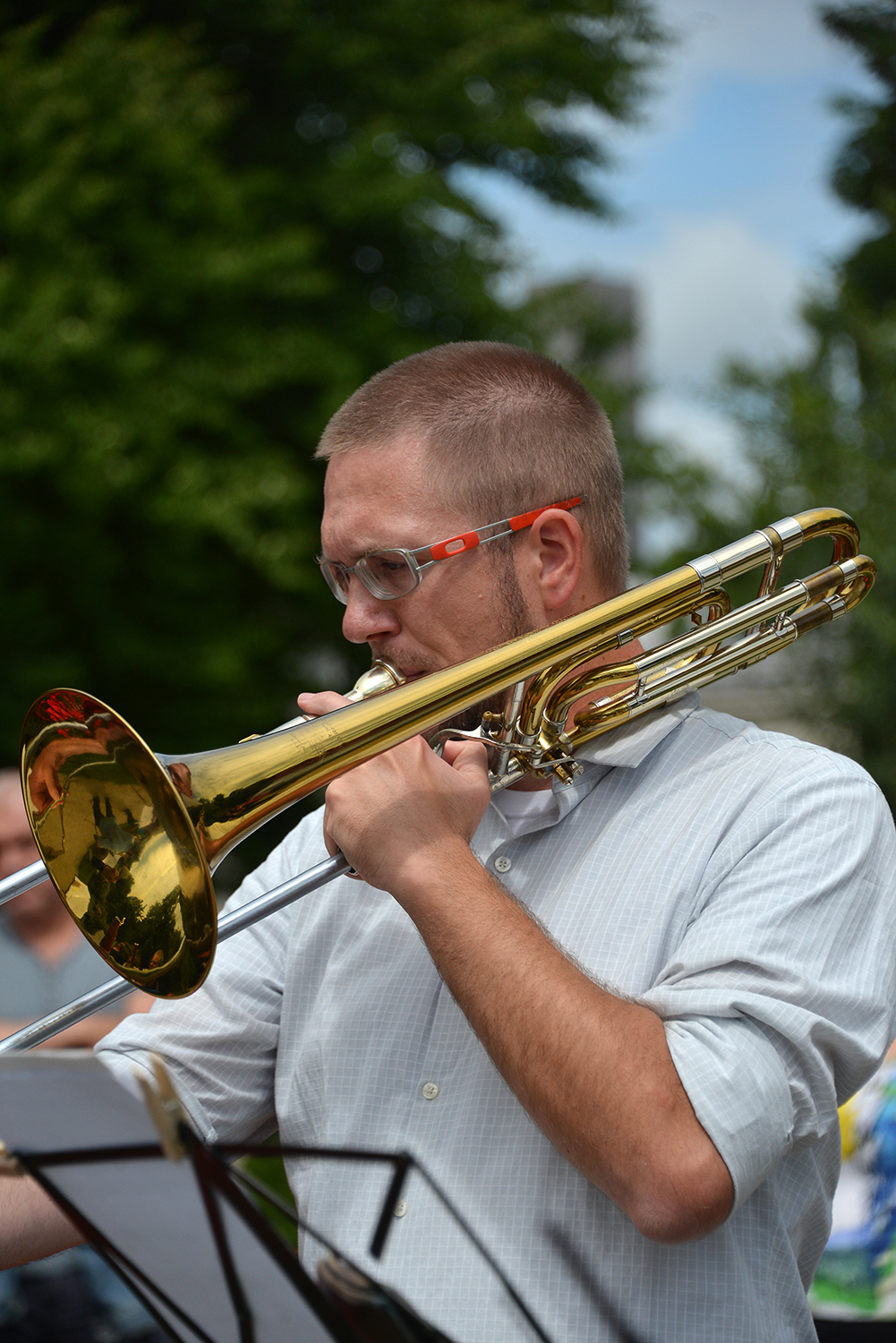
Goat Church, Sopron, Hungary.
We spent our last 24 hours in Sopron, Hungary. It is a fascinating city that has felt the most “foreign” of all our recent stops. The city center consists variously of 9th-century Roman ruins, 11th-century medieval walls, and 17th-century Baroque towers and cathedrals. Our first experience in a former Soviet bloc country, we all felt the long shadow cast by the distantly-fallen Iron Curtain. We walked a bit over a mile from our hotel to our performance venue, and along the way I felt a strange sense of familiarity to the rough edges of the city. I came to realize that this industrial city has the look and feel of the Rust Belt cities in the US where I have lived and worked: Detroit, Mich.; Rochester, NY; Cleveland, Ohio; and Milwaukee, Wisc.; among many others.
Our performance was at a gorgeous new building surrounded by a deciduous forest at the Lingeum Sopron. The glass-walled structure had an airy, open feel, and was filled with the results of engineering projects from the University of Western Hungary. We performed for a warm audience in an intimate space on the second floor amidst motorbikes, modern couches, wooden toys, and models of energy-saving homes. A truly unique venue, we all concurred. Post-concert, our gracious hosts feted us with traditional Hungarian fare in a classic setting amidst the woods and buildings of the research facility.
One of my contributions to this tour has been my orchestration of Aaron Copland’s “Old American Songs” to feature our baritone, Dr. John Seesholtz. Originally for voice and piano, I found great pleasure in seeking a “Coplandesque” shimmer from our unusual combination of woodwinds and brass.

Baritone, John Seesholtz.
Although I had the sounds and instrument combinations in my head, it has been a thrill to hear the songs come to life in every venue since a clarinet note here or a brass pairing there appear in different lights depending on the physical space. The compact concert location in Sopron illuminated the brass for me in particular since I was placed directly behind the three horns as opposed to behind the bassoons as I usually am. From that new vantage point, I reveled most in Copland’s brilliant re-harmonization of the old hymn tune “At the River.” I set the introduction and the first verse for three horns, trombone, and solo trumpet, and for the first time since we began playing these songs I felt “inside” Copland’s harmony and my own creation. Combined with John’s lush baritone and (per his request), the darker key of D-flat major, the experience raised every hair on the back of my neck.

Christopher Van Hof performing at Mirabell Garden, Salzburg, Austria.
That has been the wonder of this journey for me: once the trains, languages, short nights, quick meals, and all other facets of international travel are set to the side, the opportunity for me to participate–however obliquely–in the ongoing unfolding of music throughout time proves to consistently inspire. It is why I studied music and why I find such deep satisfaction performing and writing, especially with my friends and colleagues.
Click here to see more photos from Sopron.
~ contributed by Chris Van Hof, DMA, Assistant Professor of Trombone and Euphonium


